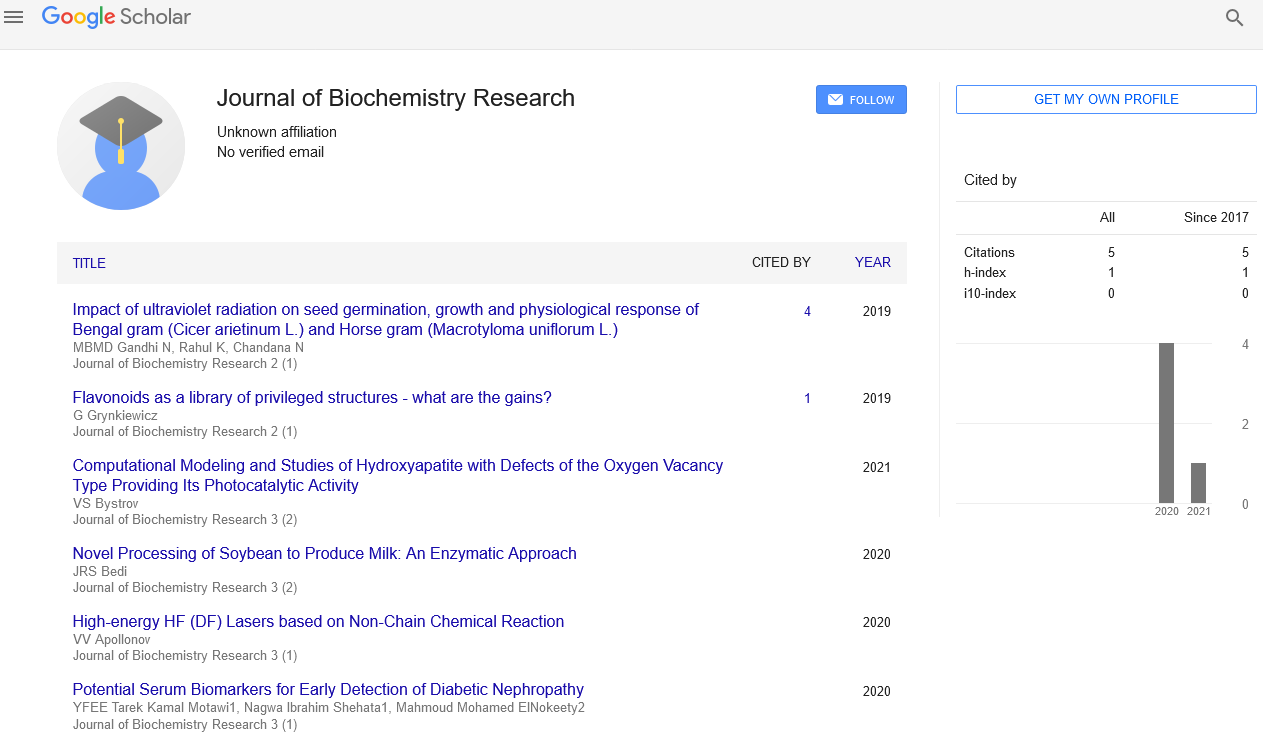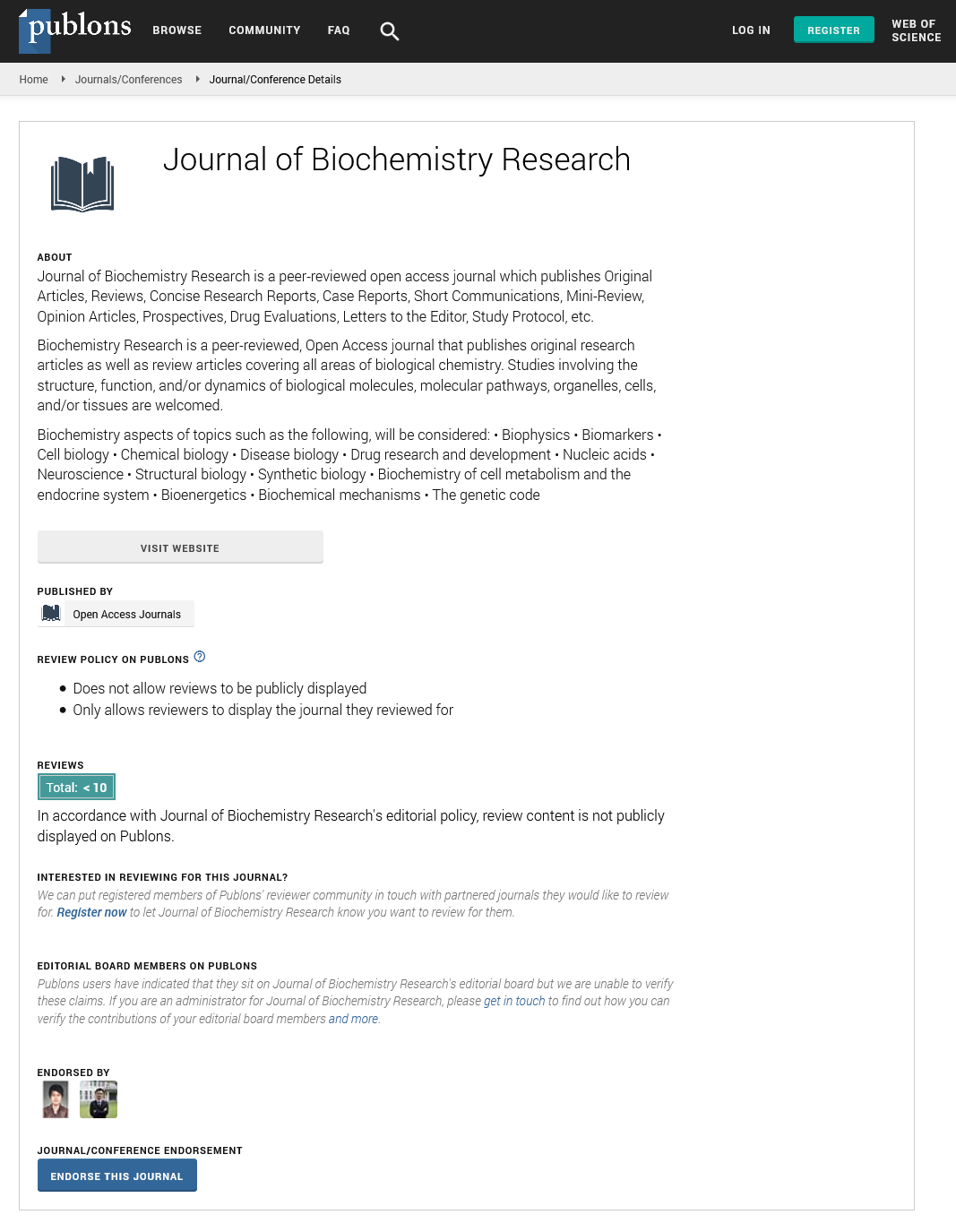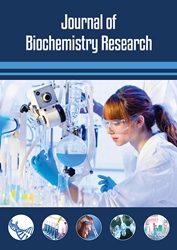Editorial - Journal of Biochemistry Research (2023) Volume 6, Issue 1
Membrane Transport: Cell Membrane Transport and Signal Transduction
Dr. Garima Peeters*
Department of Cell Membrane Transport and Signal Transduction, University of Stanford, United States
Department of Cell Membrane Transport and Signal Transduction, University of Stanford, United States
E-mail: g.peeters@gmail.com
Received: 02-Feb-2023, Manuscript No. oabr-23-89005; Editor assigned: 06-Feb-2023, PreQC No. oabr-23- 89005; Reviewed: 20- Feb-2023, QC No. oabr-23-89005; Revised: 22-Feb- 2023, Manuscript No. oabr-23-89005 (R); Published: 28-Feb-2023; DOI: 10.37532/oabr.2023.6(1).07-09
Abstract
Specialized cell functions can be localized, contained, and independently regulated by organelles. Membranes that are selectively permeable are frequently used to achieve this separation. These membranes allow for the control of molecular transport, signalling between compartments, and the confinement of factors that cause stress. Here, we examine the cell's various membrane systems and their functions: the endoplasmic reticulum membrane, the plasma membrane, and the nucleus, the cell's chromatin storage and regulatory hub. Ions, metabolites, proteins, and messenger RNA can be moved to and from the nucleus through nuclear pores. Translocation across the nuclear envelope also alters the activity of transcription factors and signalling molecules. The nuclear pores, Ran-GTP activity, and the nuclear lamina may be responsible for regulating many of these processes, which require "active transportation" against a concentration gradient. We also discuss how mechanical signals are carried from outside the cell into the nucleus through integrins, the cytoskeleton, and the "linker of nucleo- and cyto-skeletal" (LINC) complex, which spans the nuclear envelope. Cells must respond to a combination of biochemical and physical inputs. Cells are able to maintain homeostasis within functional tissue through regulation and response to internal and external stresses and signals. The ability of a membrane to precisely regulate the concentration of solutes in the inside and outside aqueous compartments that bathe it is essential for life. The solutes that enter and leave a cell are controlled by the membrane. Complex interactions between membrane lipids, proteins, and carbohydrates control Tran’s membrane transport. This chapter examines how the membrane performs these functions.
Keywords
Plasma membrane • Endoplasmic reticulum • Nuclear envelope • Nuclear pore complex • LINC complex • Nuclear lamina • Biological membrane • Cells Fick’s laws • Membrane
Introduction
Foods can be considered functional if they aid in disease prevention and health maintenance. They might offer a way to lessen the growing strain on the healthcare system. Functional lipids can be loosely defined as a subset of functional foods that have been shown to have physiological benefits and/or reduce the risk of chronic disease beyond basic nutritional functions [1]. Although The ability of a membrane to precisely regulate the concentration of solutes in the inside and outside aqueous compartments that bathe it is essential for life. The solutes that enter and leave a cell are controlled by the membrane [1]. A biological membrane is semipermeable, which means that it is permeable to some molecules, particularly water, but very impermeable to most solutes (a variety of biochemical and salt substances) in the bathing solution. In the 1890s, Charles Overton pioneered the concept of unequal Tran’s membrane distribution and, as a result, permeability between water and other solutes. How is semi-permeability achieved in a biological membrane achieved? The membrane’s hydrophobic core, an oily layer that is only about 40 micrometres thick, serves as the main barrier against solute movement [2].
Because it keeps molecules in the cell at sufficient concentrations to allow for the intricate biochemical reactions that make life possible, the plasma membrane is one of the most significant developments in evolution. The nuclear envelope, which encloses chromatin within the nucleus, and the endoplasmic reticulum membrane, where a subset of proteins and lipids are manufactured, is two additional significant membrane structures in addition to the plasma membrane, which is the structure that defines the cell. By allowing “high-stress” conditions like unfolded proteins or reduction/oxidation chemistry96 to be contained within isolated environments, compartmentalization makes it easier to maintain intracellular homeostasis and regulates and protects the cell’s overall functionality. However, in order for organelles and cells to function more effectively, they must be able to communicate with one another and with their environments [3]. Therefore, membranes must be selectively permeable in order to permit the propagation of signals necessary for dynamic cell regulation and the transportation of molecules. Additionally, many processes require “active transport” mechanisms that effectively pump required molecules across a membrane because transport may occasionally be required against a concentration gradient. Using examples of how these structures support cellular homeostasis, this review will examine the roles and permittivity of the nuclear envelope, ER, and plasma membrane. In addition, it will discuss how biochemical and mechanical signals can be transmitted from the extracellular environment to the cell’s internal regulatory mechanisms, particularly the nucleus, allowing the cell to constantly adapt to its environment and functions [4].
Plasma Membrane and Osmosis
The plasma membrane is a selectively permeable phospholipid bilayer that protects the cell’s interior from the outside world. The maintenance of intracellular homeostasis necessitates the controlled uptake and release of ions and other molecules, as well as the bidirectional transmission of signals [5]. In order to accomplish this, the plasma membrane contains channel and receptor proteins that respond to chemical and physical cues. Integrins and other adhesion proteins aid in cell attachment and permit physical compliance studies of the extracellular environment, while cell surface receptors send signals to the outside world. Because of this, these surface proteins are able to send both mechanical and biochemical signals into a variety of intracellular signaling pathways, which makes it possible for the organism to continuously sample and adapt to the environment. The precise spatial and temporal control of such signaling, such as through negative feedback mechanisms, is necessary for maintaining homeostasis [7].
Osmosis is a unique form of diffusion, in which water moves through a semipermeable membrane. A membrane’s potential gradient, from high to low, allows water to easily cross. The force required to stop water from moving across the semipermeable membrane is called osmotic pressure. Up until the point where it’s potential is zero, net water movement continues [8]. William Hewson’s pioneering work on the haemolysis of red blood cells in the 1770s served as an early example of how the fundamental principles of osmosis were put into practice [9]. MLVs have also been mentioned as having almost perfect ohmmeter properties, shrinking in hypertonic solutions and expanding in hypotonic ones. Using a straightforward spectrophotometer, changes in absorbance caused by light scattering and liposome shrinkage can be easily observed. As a result, a lot is known about osmosis because it has been studied for a long time using inexpensive methods [10].
Conclusion
Some molecules can pass through a biological membrane, which is semipermeable; notably water, while being extremely impermeable to most solutes that necessitate a transporter in some form. The solute reaches equilibrium across the membrane through passive diffusion, which only requires the energy that is inherent in the electrochemical gradient of the solute. Active transport, on the other hand, requires more energy and results in no equilibrium and net solute accumulation. Simple diffusion or facilitated carriers like ionophores and channels can be used in passive transport. Numerous, frequently intricate forms of active transportation exist. Primary active transport, secondary active transport, and group translocation are all examples of active transport. Gap junctions, receptor-mediated endocytosis, phagocytosis, pinocytosis, exocytosis, and apoptotic membrane blebbing are among the many transport mechanisms that can be employed.
In order for living tissue to maintain homeostasis, cells must be able to withstand or adapt to challenging conditions: These include the stresses caused by how their own internal chemistry works and the stresses caused by their surroundings. By providing containment and separation for processes like protein modification and folding in the ER and chromatin regulation in the nucleus, membranes play an important role in maintaining this robustness. Cell adaptability is also dependent on signaling across membranes.
This was demonstrated here with the regulation of molecular chaperones in response to internal stresses and mechanotransduction pathways that result in nuclear remodelling and nucleus protection in response to mechanical stresses applied by the environment. It might seem appealing to try to categorize the functions of particular cellular components, like membranes, as being solely mechanical or chemical in nature. Considering biological processes as pathways of intermolecular interactions with spatial and conformational regulation, biochemical approaches have been the foundation for a longstanding understanding of cellular functionality. Recognition of mechanical and physical factors has recently added to these methods. However, physical and biochemical pathways may rely on the same components and perform functions that overlap or complement one another: For instance, a molecular chaperone might not be able to tell the difference between client molecules that are unfolded under stress from heat, cold, or force.
We’ve talked about where mechanical modes can help or hinder biochemical signaling pathways and where they are necessary for maintaining cell homeostasis in active tissue. In point of fact, physical signaling pathways may provide unique benefits: The transmission of signals from the plasma membrane to the nucleus in mechanical processes can occur in milliseconds or less. In a similar vein, it has been demonstrated that the signal transducing protein Src kinase, also known as sarcoma kinase, is activated 40 times faster in response to a mechanical stimulus than it is activated by biochemical means through the epidermal growth factor receptor. This may be an indication that mechanical stress requires a quick response. Important questions remain despite the growing interest in the role that mechanical and chemical factors play in maintaining tissue homeostasis.
Acknowledgement
None
Conflict of Interest
None
References
- Simó R, Hernández C. Treatment of diabetes mellitus: general goals, and clinical practice management. Revista Espanola de Cardiologia. 55: 845-860 (2002).
- Makam AN, Nguyen OK. An Evidence-Based Medicine Approach to Antihyperglycemic Therapy in Diabetes Mellitus to Overcome Overtreatment. Circulation. 135: 180-195 (2017).
- Qaseem A, Vijan S, Snow V et al. Glycaemic control and type 2 diabetes mellitus: the optimal haemoglobin A1C targets, a guidance statement from the American College of Physicians. Annals of Internal Medicine. 147: 417-422 (2007).
- Bick David, Bick Sarah L, Dimmock David P et al. An online compendium of treatable genetic disorders. American Journal of Medical Genetics. Part C, Seminars in Medical Genetics. 187, 48-54 (2021).
- Lvovs D, Favorova OO, Favorov AV et al. A Polygenic Approach to the Study of Polygenic Diseases. Acta Naturae. 4, 59-71 (2012).
- Yoshiura K, Kinoshita A, Ishida T et al. A SNP in the ABCC11 gene is the determinant of human earwax type. Nat Genet. 38, 324-30 (2006).
- Pratley RE, Rosenstock J, Pi-Sunyer FX et al. Management of type 2 diabetes in treatment-naive elderly patients: benefits and risks of vildagliptin monotherapy. Diabetes Care. 30, 3017-3022 (2007).
- Doucet J, Chacra A, Maheux Pet et al. Efficacy and safety of saxagliptin in older patients with type 2 diabetes mellitus. Curr Med Res Opin. 27, 863-869 (2011).
- Amori RE, Lau J, Pittas AG et al. Efficacy and safety of incretin therapy in type 2 diabetes: systematic review and meta-analysis. JAMA. 298, 194-206 (2007).
- Kenny C. when hypoglycaemia is not obvious: diagnosing and treating under-recognized and undisclosed hypoglycemia. Primary Care Diabetes. 8: 3-11 (2014).
Indexed at, Google Scholar, Crossref
Indexed at, Google Scholar, Crossref
Indexed at, Google Scholar, Crossref
Indexed at, Google Scholar, Crossref
Indexed at, Google Scholar, Crossref
Indexed at, Google Scholar, Crossref
Indexed at, Google Scholar, Crossref
Indexed at, Google Scholar, Crossref
Indexed at, Google Scholar, Crossref


